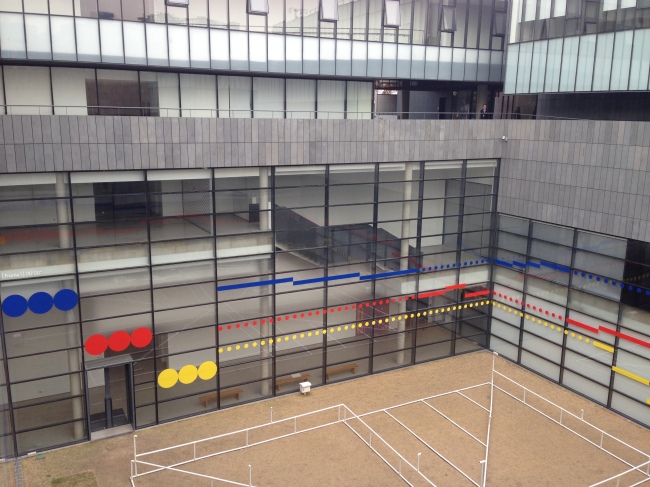To think of Bauhaus-style interior design, a modern apartment studio with sleek and monotone interior comes to mind. It’s one of the contributions of the legendary German design school in the field of design.
For more than 30 years the German academic design institution operated in pursuit of shaping new design principles. Although the school closed 81 years ago, its influence on modern design has been significant. Now, the word Bauhaus signifies the cool, streamlined interior, furniture design or architecture that fascinates design-savvy people.
Founded in 1919 in the city of Weimar by German architect Walter Gropius, the school explored the role and function of art and design closely related to daily life, especially in industrial society. Their curriculum dealt with various aspects of design such as architecture, textiles and metal in relation to the human being.
Its influence on architecture and industrial design has been examined in previous exhibitions, but the new exhibition at the Museum of Modern Contemporary Art, Korea focuses on aspects of Bauhaus that have rarely been explored in exhibitions such as stage design and performance.
 |
Exhibition view of “2’13, 36 frames” by Kim Young-na and “Internal Exile” by Oh Jae-woo. (MMCA) |
The exhibition started at Dessau Bauhaus Foundation in 2013 in the city of Dessau, the second place where the school was based. It was shown in Norway in May 2014 and arrived in Seoul last week. The exhibition, co-organized by the Dessau Bauhaus Foundation, continues through Feb. 22, 2015 at the Seoul branch museum of the MMCA.
“Bauhaus examined human beings as the subject of learning and art. The exhibition ‘Human, Space and Machine’ deals with the tension between human beings and the industrial world,” said Torsten Blume, curator of Bauhaus Dessau Foundation, an institution dedicated to preserving the legacy of Bauhaus.
The exhibition displays sketches of bodies, experimental and creative stage sets that students and teachers at Bauhaus explored through their design projects. Also on view are sketches of prominent German artist Oskar Schlemmer, one of the teachers who taught courses at the school and some other geometric figure sketches and paintings that simplified human body figures and objects. Although the archive of sketches and drawings may look boring, they explain some key design elements of Bauhaus ― streamlined, simple and geometric design that defines contemporary design.
Korean artists present their own Bauhaus-inspired artworks in the museum. Designer Kim Young-na glued color sheets, that simplifies the dance performance tried out by Schlemmer, to the surface of the transparent windows in the museum’s closed outdoor space.
On the ground is the labyrinth of white pipes made by artist Oh Jae-woo. At each end of the pipes is a speaker that plays pansori, the traditional Korean opera, which creates a solemn atmosphere. The use of industrial materials such as PVC pipes was inspired by Bauhaus’ utilization of industrial and synthetic materials in design.
The exhibition has dedicated a section of the museum to the classroom of the Paju Typography Institute, an experimental typography school led by renowned typography designer Ahn Sang-soo in Paju.
“Free spirit and experimentalism which guide the PTI resembles those of Bauhaus,” said Ahn during the press preview last week.
The students carry out their usual school projects, but they are also part of the performances in the exhibition. They conduct performances and installations in line with the ideals of creative design concepts that Bauhaus pursued.
By Lee Woo-young (
wylee@heraldcorp.com)








